When building a bath, it is very important to pay attention to every little thing, and the choice of suitable stones is just as important as a properly built furnace. Stones must have the desired characteristics and meet certain requirements. In this article we will tell you how to choose stones for a bath, so that they not only decorated the steam room, but also served you for a long time.
Stone requirements
If you build a bath that you plan to use regularly, the selection of stones should pay special attention. Create pebbles on the banks of the river or lay out on the furnaces, ordinary cobblestones will not be enough, because the material that will be constantly subjected to intense and strong heating must have excellent quality. It is best to acquire stones in specialized stores, because only the productly prepared and collected goods are supplied to such sales points in strictly defined places. High-quality stones do not constitute any threat to human health, because they do not distinguish harmful substances and are not radioactive. On packages with similar products will be a mark that the goods have passed radiation control. If, by ignorance, collect stones self somewhere near the railway embankment, you can seriously poison toxic creosote. By the way, many shops are offered as stones for the bathtub ingots. In fact, they are not stones, so they do not possess any healing properties, but the cast iron wonderfully accumulates heat.
Let us consider in more detail how the main requirements must match the stones for the bath:
- Resistance to severe heating. There are weights of rocks that can be used in steam room, but no matter which one you give preference, the selected stones should not crack and decay under the influence of high temperatures. When buying a material, always check its strength, knocking on the stones with a hammer or hitting one stone about the other. You can also start to buy a trial batch of goods and check its quality in fact, cracking the material is hot, and then dipping in cold water. High-quality stones can easily withstand such an inspection.
- Determining with what stones for a bath purchase, you should also pay attention to their ability to accumulate heat. The ability to accumulate high temperatures is determined by the high specific weight, density and homogeneity of the material. Such stones after heating for a long time remain hot and slowly give warmly into the external environment.
- Speaking about the requirements for stones for a bath, you can not forget about the decorativeness of the material. An important role here plays both the appearance and the format of stones. In large, large elements of 7 to 13 cm with a diameter of 7 to 13 cm in size will be harmoniously. For compact electrical furnaces, small stones are more suitable, the diameter of which does not exceed 5-6 cm. To date, you can find salt stones presented in various format .
Subtleties selection of stones for a bath
The best stones for the bath must have excellent quality - this will be the key to their durability. Before buying a material, the superficial inspection of the goods will not be superfluous. Pay attention to how much the surface of the stones is, there is no visible cracks, chips, damage. Check the strength of minerals, hardly hitting one stone about the other.
In the form and appearance of the stones can be divided into 2 types: crusted and occasional. Let's try to figure out which of these stones for the bath is better. The surface of the brick stones has a large area, respectively, when the water gets into hot minerals, more steam is formed. As for rounded stones, their advantage is to better circulate hot air between individual elements, which is due to a smooth returned form. When choosing stones, people most often rely on taste preferences, because someone likes the natural natural forms of the material, others prefer accuracy and tidy of rounded stones.
Stage structure also has an important meaning. Minerals should be dense enough and homogeneous. If we use layered stones in a bath furnace, after a short time they will be destroyed and fill in fine particles of the air circulation. This will lead to a decrease in the number of steam and the worse exit of smoke.
Some bath sellers for baths advise to acquire the breeds of volcanic origin, because it is believed that they are rapidly increasing and slowly gives the temperature. Indeed, the ability to accumulate heat in volcanic rocks is quite high, but at the same time, such stones are unsafe for health. After water falls on the hot stones, they begin to throw microparticles into the atmosphere. In principle, such a material can be used in a bath furnace, prudently covering its protective grid, but it is better not to risk and buy safe stones.
Before you choose a stone, you should also decide which material you would like to use in your bath: artificial or natural. Each of these species has its advantages. The plus of artificial stones can be considered a relatively low cost, as well as the ability to quickly crack. However, even considering the high heating rate, such stones are cooled fairly quickly. In addition, artificial material does not carry any energy and benefit for human health. Natural stones are more expensive, but it is believed that they are able to have a beneficial effect on health. In addition, natural materials collected in clean areas are environmentally friendly and absolutely safe.
As mentioned earlier, collecting stones on their own, you risk choosing poor-quality material, so it is best to get similar products in the store of the appropriate specialization. First, when buying stones you will be offered several different breeds, of which you can choose the minerals to taste yourself. Secondly, in the store stones are sorted by fractions, which makes it possible to purchase a material that is the size that suits your oven. Well, thirdly, the minerals undergo a thorough processing on sale, during which all sorts of viruses and pathogenic microorganisms are destroyed.
Suitable rocks for baths
There are quite a large number of breeds that can be used in bathing furnaces. Consider them in more detail:
- Jadeitis is considered a very popular stone stone. It should be noted that Jadeitis refers to semi-precious rocks, and the ancient Indians appreciated it no less than gold. From this stone did amulets, as well as decorative elements to decorate the ruler's throne. The Chinese also read the Jadeitis, which was used to cladding the walls in the imperial baths. The popularity of the mineral in our country is due to its high quality, excellent strength characteristics, heat resistance and good ability to accumulate heat. Jadeitis slowly gives the temperature to the surrounding space, besides, it is very durable. Its dense homogeneous structure does not form cracks and chips, even with frequent and long heats. The stone absorbs water well, so it is often used in pair baths. Another important plus of the mineral can be considered its healing properties. Jadeitis has a beneficial effect on the work of the cardiovascular system, rheumatism treats, normalizes blood pressure. This stone also positively affects the nervous system and male potency, treats the disease of the urinary sphere, contributes to the dissolution of the deposited salts. If there are several types of stones in the bath furnace, then it is often stacked at the very top, to get the maximum effect of its healing effects.
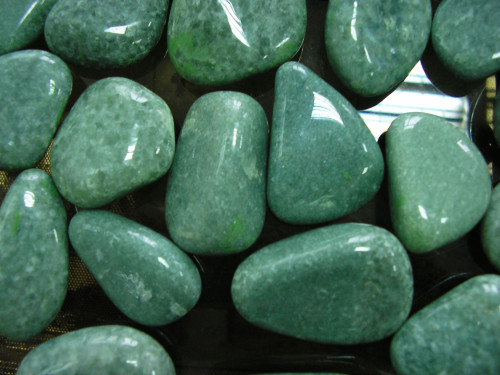
- Sea pebble in the bath furnace is used quite often, and the reason for it lies in its affordable cost. When buying sea pebbles, it is important to select stones with a homogeneous, a few layered structure. This breed does not apply to therapeutic stones, but it is loved for light steam, which is formed when water is hit on a hot pebble in a closed room. It is worth noting that the river pebble instead of the naval applied in the baths is not recommended. The material extracted from the river bottom can be saturated with sludge. After evaporating under the action of high temperature, Il highlights extremely unpleasant odor.
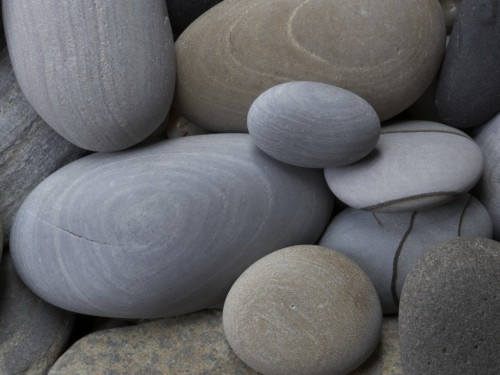
- Another popular stone for the bath is considered to be gabbro-diabases. This mineral has volcanic origin, so when it laying on a bathing oven it is recommended to cover the stone with a protective grid. Gabbro-diabase has an attractive dark color, seemingly mineral like marble. Low water absorption also relates to the pluses of such a material. Since the mineral is mined in Karelia, it can be considered environmentally friendly. The disadvantages of the stone include its slow heating and inability to hold heat for a long time. In addition, if the temperature in the bath is too high, this breed begins to highlight an unpleasant smell. Gabbro-diabases has the property to collapse over time, so the stones in the oven should be sought from time to time and remove those elements that have already spoiled. If you do not do this on time, small particles of the breed will fall into the design of the design. The pluses of the stone include its acceptable value, which is the cause of high popularity of the material.
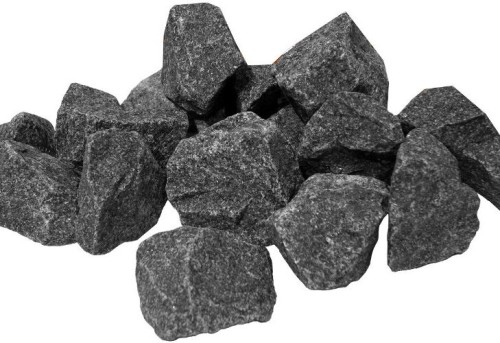
- Talco chlorite has a slight weight, but it does not affect its high density and good strength. The thermal conductivity of this volcanic material also relates to its advantages, in addition, even when heated to 1600 ° C, talco chlorite does not change its structure. Such a stone can be attributed to therapeutic, because he has a beneficial effect on immunity, strengthens the walls of the vessels, establishes the work of the circulatory system and improves metabolism. Talco chlorite helps to reduce weight, which became known thanks to the research. The observations showed that after visiting the bath, in the furnace was present talco chlorite, the mass of a human body with overweight decreased by 1.5 kg.
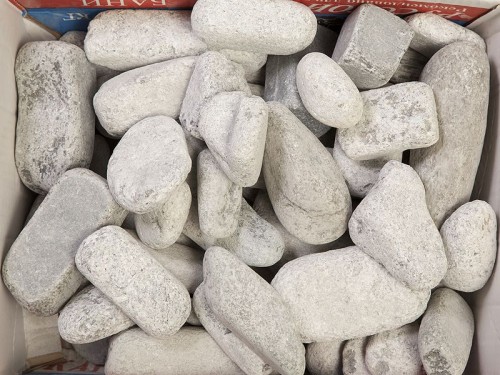
- Raspberry quartzite, except for useful properties and good strength characteristics, also has excellent decorative qualities. The second name of this mineral is the royal stone, and is named so it was not in vain. Thanks to beautiful appearance and attractive red color, crimson quartzite was part of the cladding of royal palaces. This stone can be found even in Napoleon's grave and in Mausoleum V. Lenin. Raspberry quartzite is produced in Karelia, the net ecology of which allows you to use a stone in bath furnaces without fears. The high stability of the stone to heating makes it reliable and durable, and to the healing properties of the mineral can be attributed to its ability to treat ARZ, normalize blood pressure, to have a beneficial effect on the joints of the joints, charge the body with positive energy. So that in full use of these quality material, it is recommended to lay in the stove on top of other breeds.
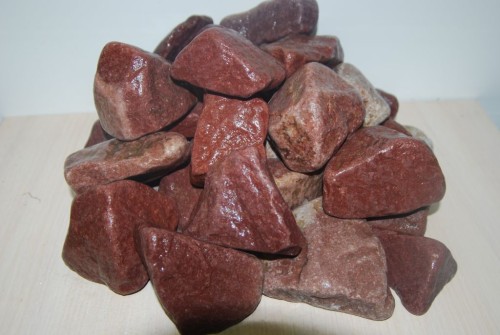
- Basalt is one of the most reliable and durable stones for the bath. It has volcanic origin, in connection with which he quickly accumulates heat. Basalt practically does not absorb water, slowly gives heat into the surrounding space, does not release harmful components into the atmosphere, as well as resistant to temperature differences. In addition, basalt has an acceptable cost, which makes it popular among consumers material.
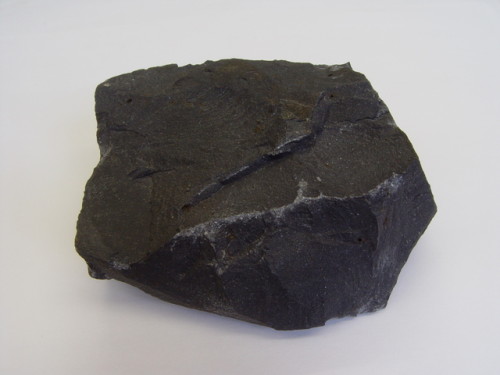
- White quartz is another popular look of stones for a bath. White quartz is sometimes called a bath stone due to the fact that it is very resistant to heating and temperature drops. By the way, when cold water gets into a hot white quartz, ozone is released into the air. The healing properties of the material include its ability to influence the heart and vessels, as well as to improve the operation of the respiratory system. It is also considered that white quartz has a rejuvenating effect on the body.
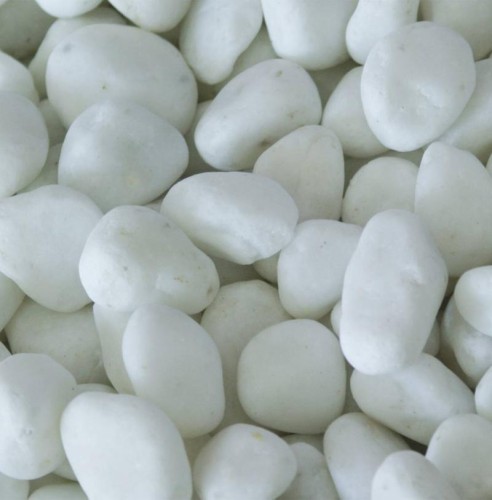
- Porphite has a high heat capacity. It is well heated and long remains hot, gradually and slowly giving the temperature into the surrounding space. Some can scare the cracks published by porphyritis during the first heating. It is worth noting that this crash does not affect the strength of the stone and at the subsequent heating of such a sound no longer arise. By the way, before each new use, porphite needs to be cleaned, then pairs will be light and fragrant. It is not worth going around the attention and therapeutic properties of the breeds, which are in the ability to treat skin diseases, headache, eliminate the problems of the vessels and respiratory system.
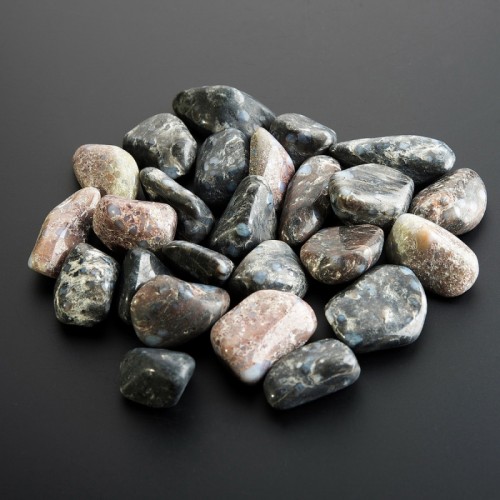
- Peridotitis is represented in several colors - this feature makes the stone with a real decoration of the bath. The stone is characterized by environmental friendliness, good ability to accumulate heat, uniform heating. By the way, in contact with carbon dioxide, hot peridotitis allocates substances that purify and disinfecting the ambient air. This breed is recommended to lay in the lower part of the heater.
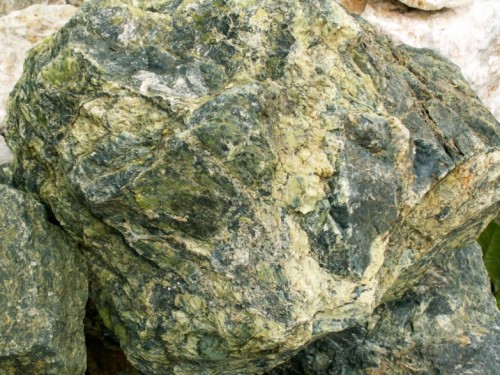
Several useful tips
- Correctly determine the desired number of stones can be carefully reading the technical characteristics of the furnace. They should be indicated which weight of the material can fit in Kamenka. It is not worth exceeding this value.
- Before laying the stones into the oven, they need to be thoroughly rinsed in clean water.
- The largest elements are stacked below, small - from above. The stones should not be too tightly, there should be airspace between the individual elements for steam circulation.
- If you want to save money, get several types of breeds of different costs. Fill in a chamber in a cheap material, and at the very top to put more expensive, beautiful stones with beneficial properties of an attractive appearance.
- Every year, stones in the stove need to sort out, eliminate the destroyed elements, and wash the rest and fold it back.



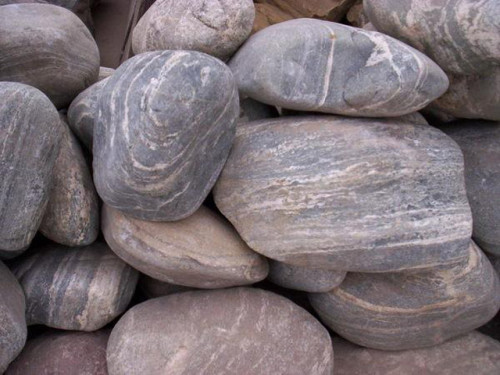
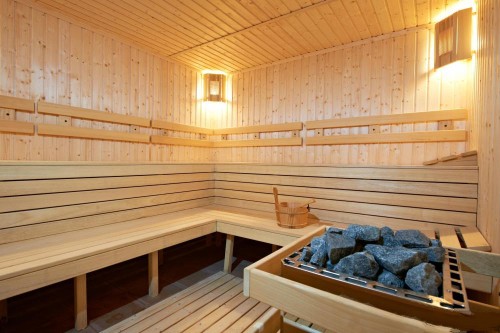





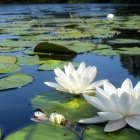




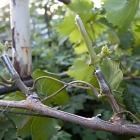

 Start a discussion ...
Start a discussion ...